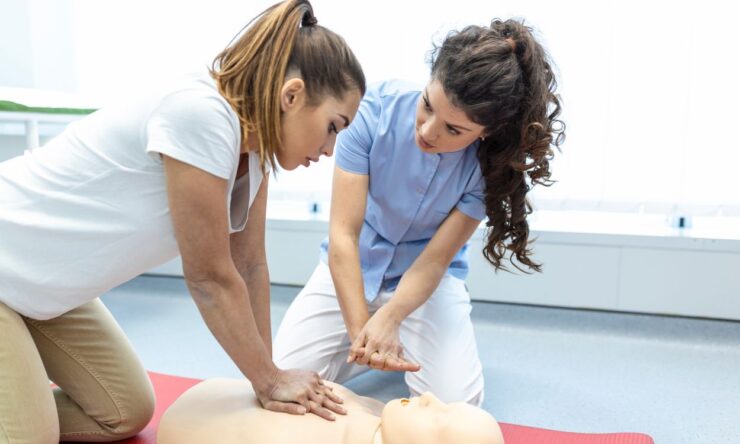Cardiopulmonary Resuscitation (CPR) training empowers individuals to provide lifesaving assistance during cardiac emergencies. The time investment for a CPR class varies and is a significant factor in the efficacy of the training. Comprehensive courses are crafted to impart not only the techniques but also the confidence needed to take decisive action in critical situations.
Contents
Duration of CPR Certification Courses
The length of classes is shaped by the certification level and the provider, with options ranging from brief overviews to extensive training sessions.
Factors Influencing Class Length
The span of CPR courses can range from concise sessions lasting only a few hours to more detailed full-day workshops. The length is influenced by the type of certification being pursued—Basic Life Support (BLS) for laypersons to Advanced Cardiovascular Life Support (ACLS) for healthcare professionals. Different instructional methods, including in-person, online, or a combination of both, also affect the duration.
Furthermore, a curriculum that includes first aid and automated external defibrillator (AED) training will naturally extend the class time. For those interested in exploring a variety of CPR certification options, MyCPR Now provides a selection of courses that accommodate these varying lengths and content complexities. You can learn more about them here https://cprcertificationnow.com/.

Course Structure
The structure of a course is deliberately designed to ensure a comprehensive learning experience. It begins with a theoretical component, where participants are introduced to the principles and techniques. Following this, there is a practical segment, where students engage in hands-on practice with manikins, replicating real-life scenarios to solidify their skills.
The course culminates with a formal assessment, evaluating each trainee’s ability to perform CPR correctly and efficiently. This systematic approach ensures that by the end of the session, attendees are not only knowledgeable but also capable of applying CPR techniques with confidence.
Importance of Thorough CPR Training
The depth of instruction is paramount to providing efficient and effective aid in emergencies. The duration of the course often reflects the level of detail and thoroughness in training.
Building Competency and Confidence
Extended training sessions cover a broad range of emergency scenarios, equipping learners with the necessary skills to perform CPR in different age groups, from infants to adults. These comprehensive courses are crucial for nurturing not just the skill but also the self-assurance to act promptly and competently.
Ensuring Retention and Readiness
Classes must be designed to reinforce retention and ensure readiness. This involves sufficient practice time, which helps establish muscle memory and includes regular updates on the most current practices.
The simulation of emergency scenarios is also a key aspect, preparing participants for the real-life application of their skills.

Conclusion
To sum up, the duration of a CPR class is indicative of the depth and breadth of the training. Although short courses can lay down the basics, it is the extended, detailed sessions that are pivotal in fostering the adeptness and confidence required to respond to life-threatening situations effectively.
The true measure of such training lies in being prepared to act effectively when it counts the most.

